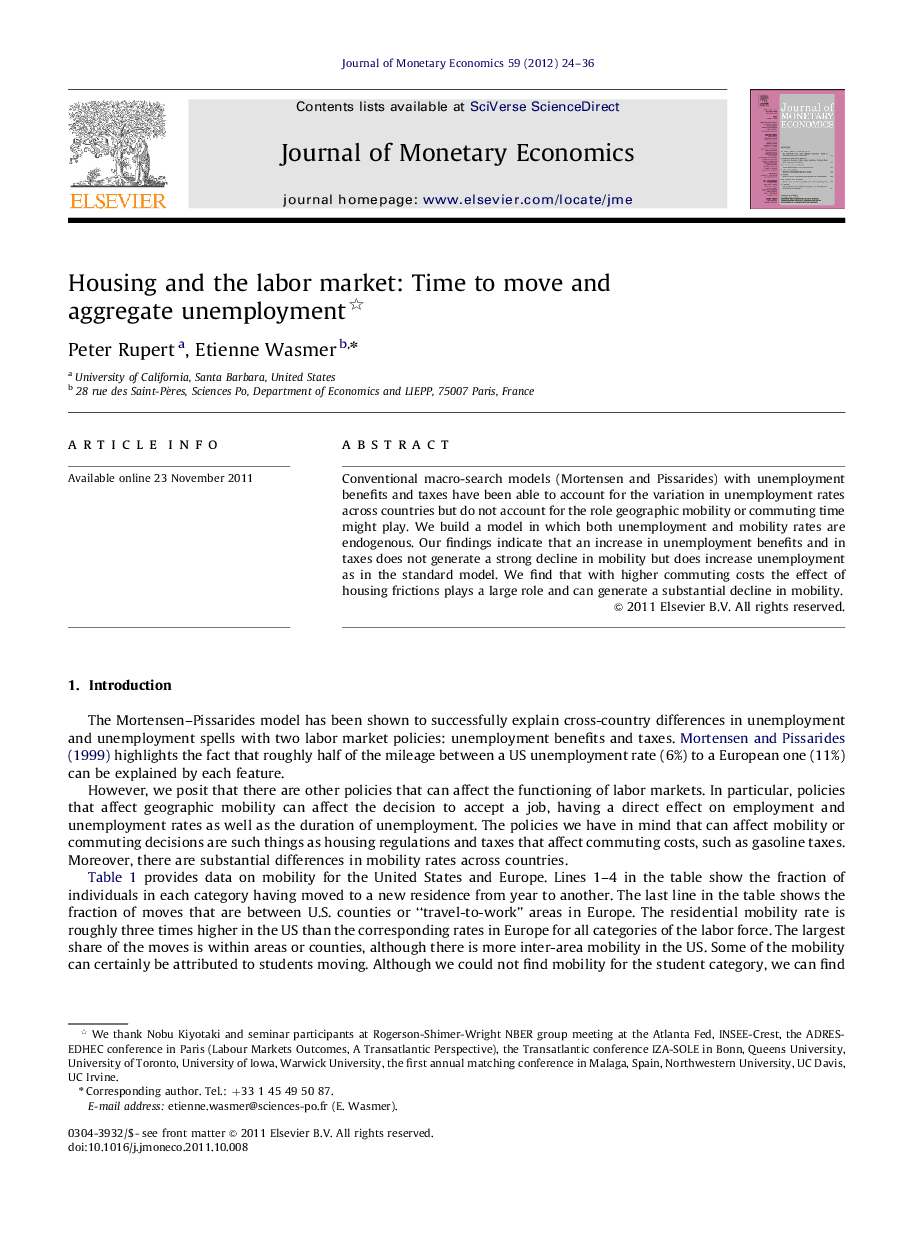| Article ID | Journal | Published Year | Pages | File Type |
|---|---|---|---|---|
| 967713 | Journal of Monetary Economics | 2012 | 13 Pages |
Conventional macro-search models (Mortensen and Pissarides) with unemployment benefits and taxes have been able to account for the variation in unemployment rates across countries but do not account for the role geographic mobility or commuting time might play. We build a model in which both unemployment and mobility rates are endogenous. Our findings indicate that an increase in unemployment benefits and in taxes does not generate a strong decline in mobility but does increase unemployment as in the standard model. We find that with higher commuting costs the effect of housing frictions plays a large role and can generate a substantial decline in mobility.
► Unemployment benefits and taxes are two culprits behind cross-country unemployment differences. ► We argue that other policies affecting geographic mobility affect labor markets too. ► In particular, housing regulations and taxes that affect commuting costs affect mobility rates. ► They explain cross-country differences in geographical mobility and unemployment rates.
